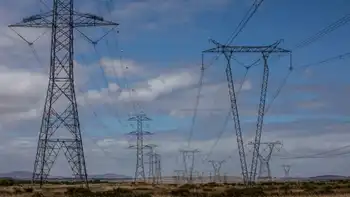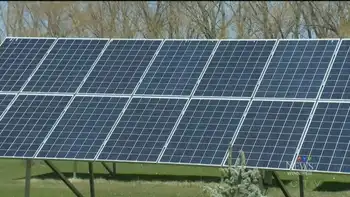Millersville may join co-op
For local governments, that changeover could mean a rate hike of thousands of extra dollars — that is, if it weren't for a program through the Lancaster County Co-operative Purchasing Board.
At a recent Millersville Borough meeting, local officials discussed the idea of joining with other area municipalities through the board to use joint negotiating power to command lower prices.
"This is a big potential rate increase, and you have to remember, this number (37 percent) is just for the first year. There may be even more increases after that," said Millersville Borough Manager Ed Arnold.
"When it comes to electricity, volume dictates the price," he said. "And that's important, especially when it comes to a municipality like Millersville, when just running the local wastewater plant requires about $170,000 worth of electricity a year."
Barry Hitchcock, director of purchasing for Lancaster County, said that the purchasing board was first formed in the mid-1980s to handle purchasing needs for Lancaster County government. It is currently part of the Southeastern Counties Purchasing Board, an intergovernmental body made up of representatives from areas including Chester, Lehigh, Northampton, Delaware and Montgomery counties.
"We have about 75 members in the (Lancaster) purchasing board, with about a third of them cooperating on purchasing agreements for their electricity," said Hitchcock. "Municipalities who participate say that they realize about five times the savings than if they were just trying to get a good price by themselves."
The purchasing board, Hitchcock said, began handling electricity in the late 1990s, when deregulation allowed customers to shop around for better prices. Involving most municipal authorities in Lancaster County, the board has even fielded calls from Berks County municipalities as well as other counties throughout Pennsylvania, Hitchock said.
The way the process would work, he said, is simple: once a municipality such as Millersville joined, the group would put together a bid for electricity service and then put that bid out on the open market.
Since a utility company would then be serving many customers through the bid rather than just one or two local governments, he said, the cooperative can demand, and receive, lower prices for better service.
"The point is to get the best possible price," he said. "There are a lot of changes happening in the industry right now, as the marketplace tries to prepare itself for what's coming. But for our part... we're doing the best we can to get the most benefits for taxpayers."
Arnold said that Millersville Borough is currently researching options, and expects the issue to come up at a council meeting in either July or August.
"There are still a lot of unknown variables in this equation," Arnold said. "At the very least, we want to make sure our costs stabilize over what could prove to be a potentially rocky few years."
According to published reports, on electricity bills in Pennsylvania will rise by an estimated 37 percent on January 1, 2010, when rate caps expire for more than 1 million residential customers of PPL Corp., the state's second-largest electric utility.
A year later, rate caps will expire for an additional 3 million-plus customers of Allegheny Power, Metropolitan Edison, PECO Energy and Pennsylvania Electric.
Related News

A resilient Germany is weathering the energy crunch
BERLIN - German industry and society are once again proving much more resilient and adaptable than certain people feared. Horror scenarios of a dangerous energy rationing or a massive slump in our economy have often been bandied about. But we are nowhere near that. With a challenging year just behind us, this is good news — not only for Germany, but also for Europe.
Companies and households reacted swiftly to the sharp increases in energy prices. They installed more efficient heating or production facilities, switched to alternatives and imported intermediate products. The results are encouraging: German households and businesses have reduced…




